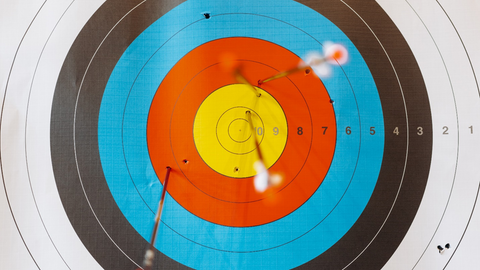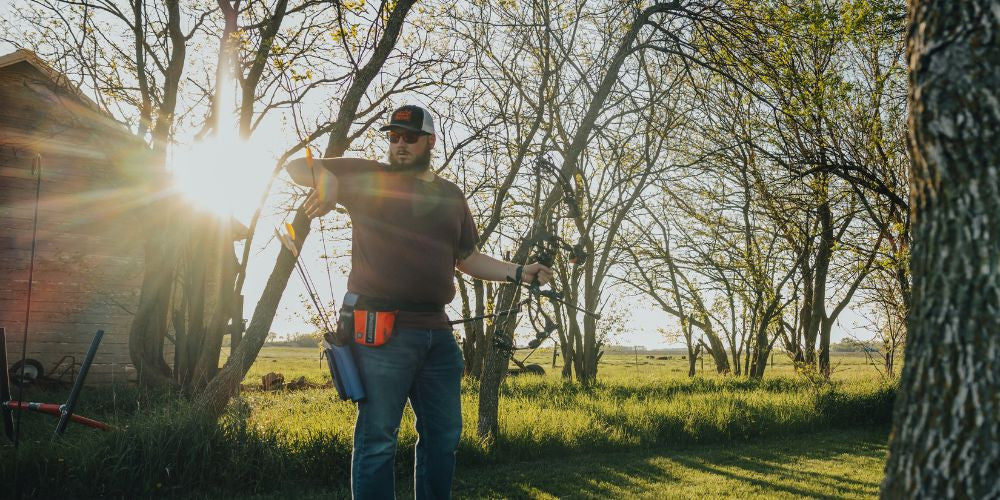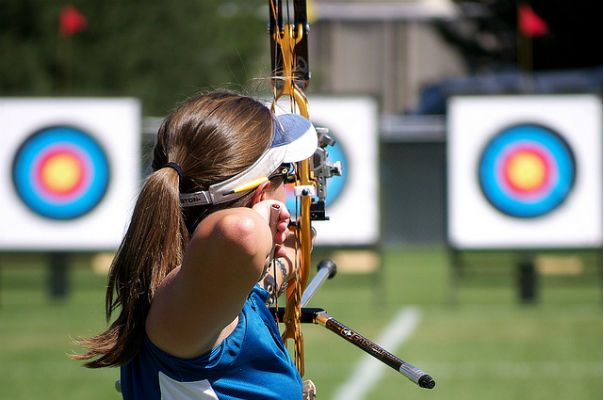Shooting in the wind can throw off even the most experienced archers. It is nonetheless a skill every archer must master as it can not always be avoided. As an archer, you’d at some point have to shoot in the wind or other challenging environmental conditions like rain or snow. As much as that doesn’t seem like a great experience, your only chance to make it a bit enjoyable is to prime yourself for it.
If you’ve always preferred an indoor shooting range, you can maintain your routine without bothering about wind conditions. However, transitioning from indoor to outdoor archery is a fun challenge you should consider. If you desire to improve your archery skills and broaden your experience, you must learn to shoot in natural outdoor conditions. Keep reading for tips on how to master shooting in the wind and conquer one of nature’s most challenging shooting conditions.
Practice With The Wind
We feel the need to put this out first since it is the most crucial point you must understand and make an effort to follow through. There is a wide gap between people who spend time in the wind and other harsh climatic conditions to prepare for their big day and those that don’t. The result is that the former feels more comfortable regardless of the prevailing weather since they have practiced in such conditions and know what others don’t.
The only way to perfect your archery in an outdoor shooting range and win against the wind is to defeat it several times. Regular practice in the wind will help you understand how your bow and arrow behave in the wind. Soon, your hit and trial run will translate into a gradual process until you completely understand the art.
Related: How To Personalize Your Bow
Identify The Wind Patterns

Ever heard the saying ‘mother nature always wins?” If you haven’t, now you do. It’s really that simple. Nature always wins. Therefore, shooting in the wind already puts you at a disadvantage. To make the most of every shot, you must start with an understanding of the wind patterns and directions.
Wind, like all elements, has patterns to it. For example, it could be gutsy intermittent flows or a light breeze. The only way to perfect your shooting skills is if you can shoot in all these directions and patterns.
Let’s discuss some archery jargon…
Tailwinds, headwinds, and side winds are popular wind patterns in archery. Tailwinds will force your arrows to fly lower, while headwinds will make them fly high. Therefore, you must release your arrow a little higher to account for tailwind or slightly aim lower than your exact aim to avoid headwind and still hit the target.
Headwinds and tailwinds can either be low-value wind or full-value wind. Low-value direct tailwinds and headwinds have the least effect on the projectile’s trajectory. On the other hand, full-value side winds produce the most change in impact point. Partial-value winds combine the impact of the two and are sometimes called quartering winds.
- Tailwinds and headwinds affect the speed of an arrow relative to its speed. As a result, the shot will have lower or higher drag than usual.
- In contrast, direct side winds push against the entire fletching lengths and shafts, and the slightest breeze will cause your arrow to drift, while direct tailwinds and headwinds will only hit a small frontal area of the arrow.
- Quartering winds combine the effects of high and low-value winds. As a result, it can be challenging to deal with.
Nonetheless, you can know the direction of the wind by observing the flag on top of the target, banners, and windsock around the range. Although it doesn’t always give the best result, you can pay attention to the flag movement to predict the wind direction. Of course, you’ll need to practice to get the hang of it so you can quickly make adjustments.
In situations where the wind moves in multiple directions or comes and goes, use the movement of trees as an indication of its return. With some practice and learning how to watch the wind from a distance, you will be able to predict how fast it is blowing and how long you have before a gust hits the target or you.
Control Your Posture and Body Movement

As mentioned earlier, fighting the wind is one of the worst things to do. Your balance can easily be disrupted at full draw. Hence, ensure you maintain an upright posture and balance before you release your shot. Set your legs apart and move your back foot forward a third of a shoe length. This will create a slightly larger base to improve your stability without compromising your posture.
Although you are starting with a solid stance, don’t be afraid to widen it a bit on windy days. However, don’t change it enough that the base of your form is off. Simply open it up a little to allow a more stable platform.
Maintaining posture requires that you keep building your core strength through strength training exercises. A solid core improves your balance and stability, helping you better control your shots even in windy conditions.
Don’t Overthink The Process
Now, this might appear cliché, but one of the reasons people fail at making a good shot in the wind is because they overthink and overcompensate. To avoid this, trust your mind and your body. Understand that you are free to take practice shots and adjust based on the result. For example, if your shot lands 4 inches to the target, adjust and try again.
Don’t Go For The Center

Does this sound counterproductive? You bet it does. The best way to shoot in the wind is to aim opposite where the arrow hits. In other words, don’t aim at the center, depending on the wind direction, of course.
Unknown to most, one of the ways to shoot accurately in the wind is to let the wind push you back to the center. True, you need timing to be able to release the shot at the exact moment. However, you’ll soon get the hang of it with enough practice.
When you let the wind push you back to your aiming position, you will do less work and maintain your energy. This is the logic – if the wind is strong enough to push you and the bow to one side, it is strong enough to move the arrows around while in flight.
Now, the question is, how much do you aim off center? The amount you aim off depends on several factors, but the best approach is to practice in different wind levels. For example, assume you are shooting towards the North. If the wind is blowing from the west, it could push the arrow to the right of the target.
Therefore, start with an arrow shot dead center while you aim to see how much it drifts to the right. If it drifts right to the seven red rings, aim off to the left of the center in the seven rings. This should cause the arrow to drift right into the center. Here’s a secret – this same idea works for winds from the side, front, and back.
Try Bubbling Off
Bubbling off is another concept that will guide your bow and arrow in the wind. It involves tilting your top cam into the wind, so your bubble goes to the left or right of the level. By slanting your bow into the wind, you can always hit the middle. If the wind flows from the right to the left, you must angle your top limp towards the right and push it against the wind. This directs the bubble inside your level to the left of the middle of your aim.
Keep Your Form
Beginner archers are always eager to look through their targeting scope for where their shot landed. Avoid this, as it can cause you to leave the shot before your arrow leaves your bow. This is why everyone should have a follow-through routine. If you must, don’t move to look through the scope until your arrow has hit the target.
Use The Most Appropriate Arrows

You must already know at this point that there is a difference between outdoor and indoor arrows. Unlike indoor arrows, outdoor arrows have slimmer shafts, shorter vanes with lower profiles, lighter points, and a straighter path. On the other hand, indoor arrows have fatter shafts that drift more in the wind. Therefore, an outdoor arrow is the most appropriate for shooting in the wind.
Archers sometimes ask whether to choose a heavy or light arrow for shooting in the wind. The answer is to choose a heavier arrow. The reason is that light arrows have less mass to resist wind forces and fly downrange quicker. As a result, the wind has less time to affect them. On the other hand, heavy arrows have more mass, and the speed and weight are balanced.
Final Thoughts
Transitioning to outdoor archery is fun. You will learn how to deliver accurate shots regardless of prevailing weather conditions. Although there are few technicalities to shooting in the wind, the most effective way to get the hang of it is to constantly practice with the wind. Then, work on your confidence, posture, body movements, and aim. If you add an accurate judgment of the wind and the right arrows to the mix, you will become unstoppable on the shooting range.
You might also like: Should Archery Be Considered As A Sport Or A Hobby?
 cust@legendarchery.com
cust@legendarchery.com 302 503 5767
302 503 5767 Whitestown, In 47075
Whitestown, In 47075




